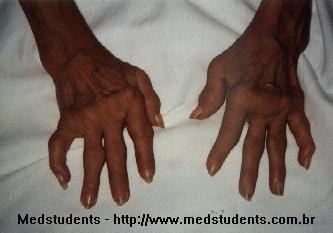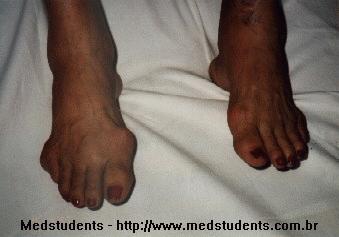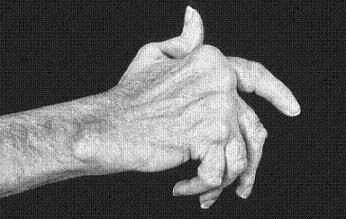|
Rheumatoid SymptomsRheumatoid symptoms usually develop with an insidious (slow, sneaky) onset. It often involves the small joints of the hands, wrists, and feet initially. This is usually in a symmetrical pattern, where the same joints are involved on the right and left sides. Because RA is an inflammatory disease of the synovium (lining) of the joints, this synovium becomes reddened, warm, swollen, and oozes extra fluid inside the joints. This causes the appearance of joint swelling, limited motion, warmth and tenderness to the touch.
More than any other type of arthritis, R.A. causes morning stiffness that can last for more than an hour and seems to improve with movement and activity. This can occur even after a period of sitting or resting and is known as the “gel phenomenon.” Systemic symptoms can also be a feature of the disease This can include fatigue, loss of appetite with weight loss, low-grade fever, muscle and joint aches, and often depression. R.A. can also affect the heart, lungs, and liver. The production of red blood cells can be affected, causing a mild anemia. Rubbery, non-tender nodules can appear on the forearms and the backs of the hands, known as “rheumatoid nodules.” Permanent stiffness, muscle wasting, and joint fusions can also occur. Theses additional problems can make treating this disease quite challenging.
Leave Rheumatoid Symptoms, Go to Home Page
|

"We hope you enjoy your journey through Bone and Joint Pain.com"



